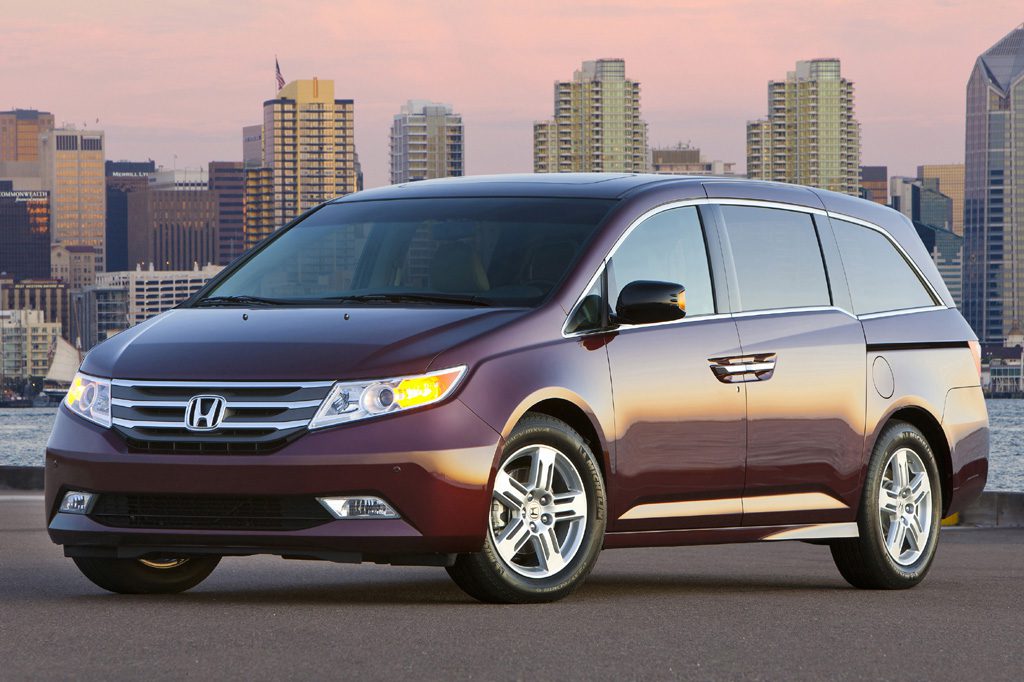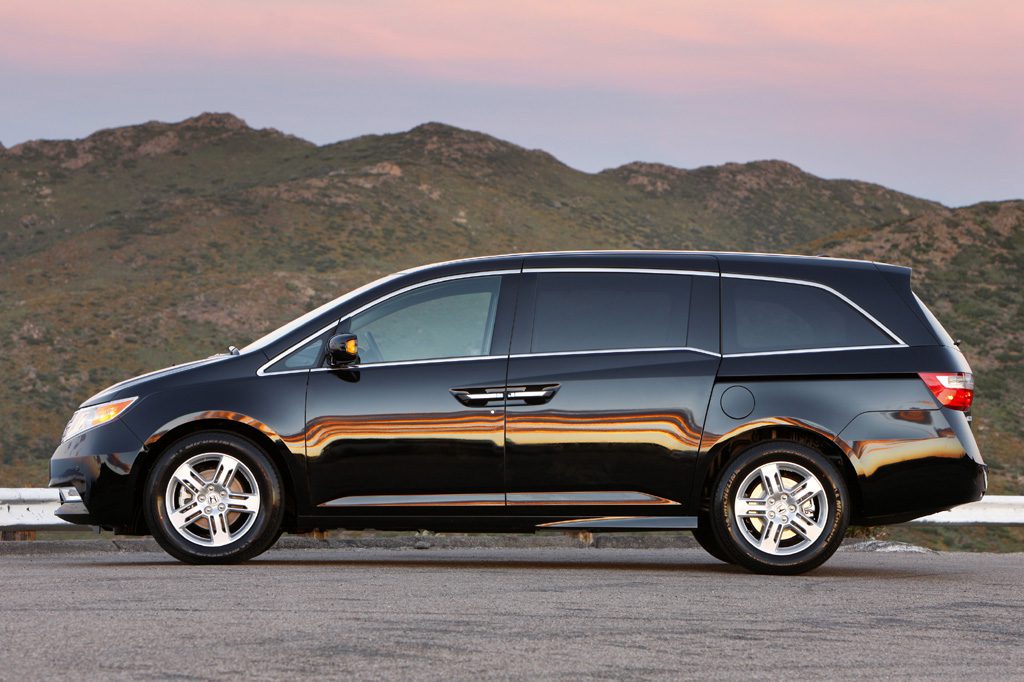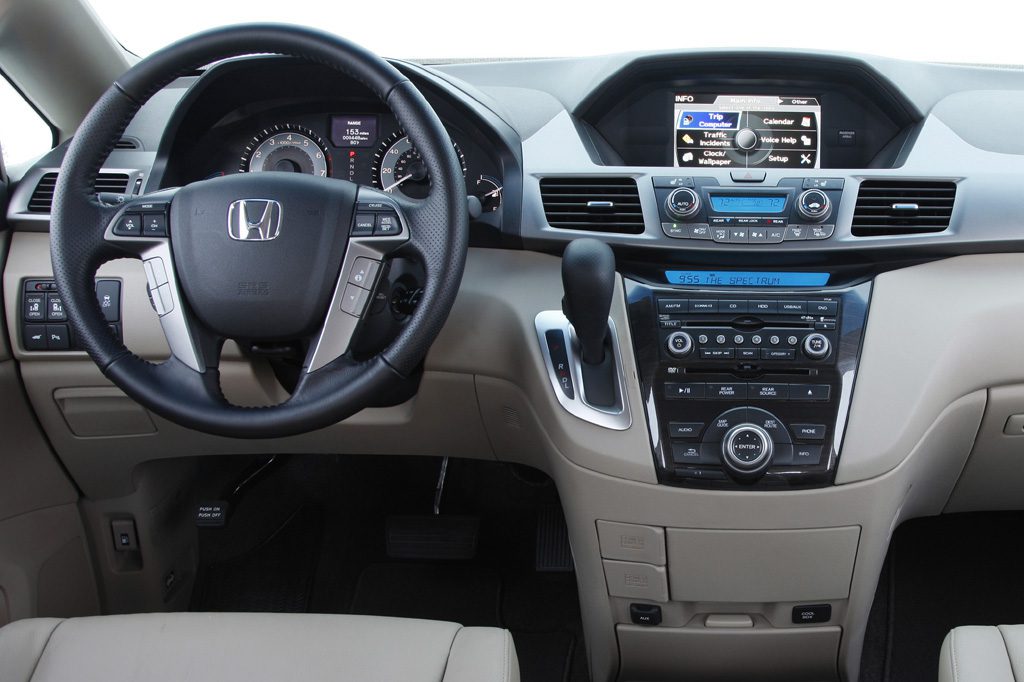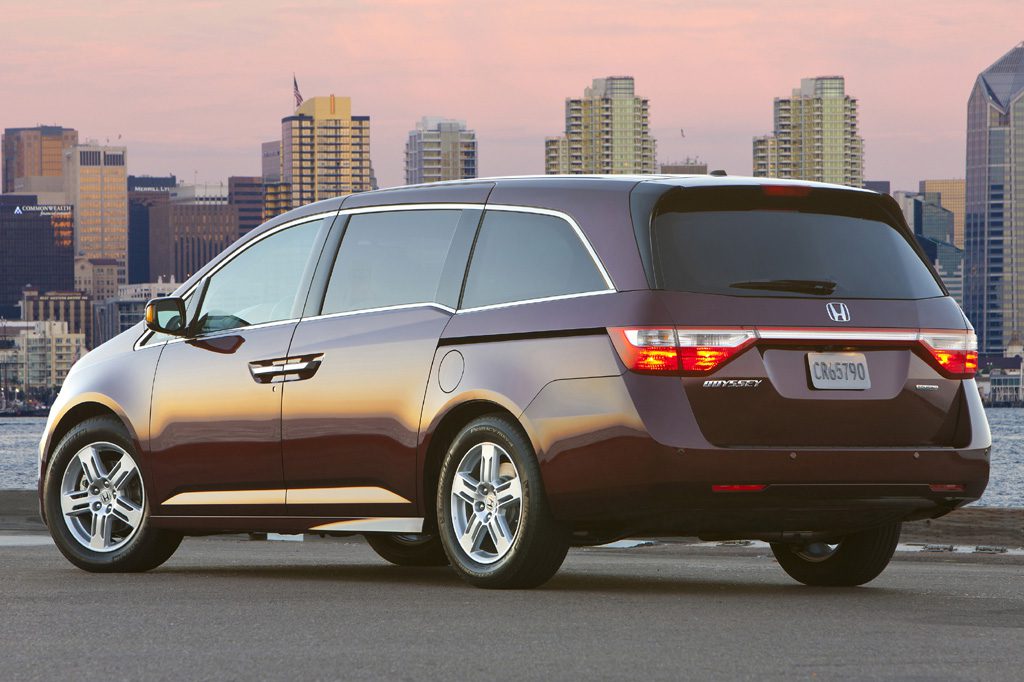| Minivan; Built in USA |
|
|
| Good condition price range: $9,300 – $33,400* |

2011 Honda Odyssey Front

2011 Honda Odyssey Profile

2011 Honda Odyssey Interior

2011 Honda Odyssey Rear
| Pros: |
|
| Cons: |
|
Some manufacturers have given up on minivans, but Honda came out swinging for 2011 with a sleekly styled people-mover that tops its esteemed predecessor in virtually every way. Even base LX models came with a host of standard features, while upper-line models offered a dizzying array of high-tech gizmos. Those extras could raise new-car to prices rather lofty levels, but the difference between models on the secondhand market is generally less dramatic. All are family-friendly vehicles that are quiet, enjoyable to drive, and dynamically competent, making the Best Buy (2012) Odyssey a must-see in the shrinking minivan market.
Overview
Redesigned for 2011, the Honda Odyssey gained fresh styling and a wider interior. Additional power was accompanied by significantly improved EPA fuel-economy numbers. Honda’s front-wheel-drive minivan came in LX, EX, EX-L, Touring, and Touring Elite trim levels. A 3.5-liter V6 with Honda’s Variable Cylinder Management cylinder deactivation was the only engine; it now produced 248 horsepower, up from the prior year’s 244. With this engine change, EPA fuel-economy figures rose by 2 to 5 mpg. Honda’s Active Noise Control, designed to electronically quell engine noise, was standard on all models. A five-speed automatic transmission was standard on all but the Touring and Touring Elite models, which got a six-speed automatic.
Standard safety features included all-disc antilock braking, traction control, an antiskid system, front side airbags, and curtain side airbags (with rollover deployment) that covered all seating rows. Power sliding rear-side doors were standard on all but the LX. The second row of the LX model had two bucket seats, giving it seven-passenger capacity. All other models added a center second-row seat for eight-passenger capacity. Second-row seats could move fore-and-aft about 5 inches and the outboard seats could move laterally about 1.5 inches. In all models, the third row seated three and folded into a well in the cargo floor, which otherwise might be used for storage. LX models had four child-seat anchors, while other models offered five. Available features included a tilt/telescopic steering wheel, three-zone automatic climate control, a navigation system with voice recognition and FM traffic monitor, and a wide-angle rearview camera. Also offered were a wireless cell-phone link, blind-spot alert, a refrigerated “cool box,” and 115-volt power outlets. The available DVD entertainment system could be fitted with a 16.2-inch-wide screen capable of displaying one wide image or two narrower ones, along with HDMI (High-Definition Multimedia Interface) ports for video game systems, Blu-Ray players, or other electronics. Honda’s Odyssey competed against such minivans as the Dodge Grand Caravan, Nissan Quest, and Toyota Sienna, as well as the Chrysler Town & Country and Volkswagen Routan.
Yearly Updates
| 2012 Odyssey The only change of note to the 2012 Honda Odyssey was that the EX edition now had a Bluetooth HandsFreeLink multi-information display, previously exclusive to the EX-L. |
| 2013 Odyssey The base Odyssey LX gained some new standard equipment for 2013. Other models saw minor trim but otherwise no major changes. |
| 2014 Odyssey The 2014 Odyssey had refreshed styling for 2014 and a 6-speed automatic transmission was standard on all models. Previously, LX and EX models got by with a 5-speed automatic. Forward-collision warning and lane-departure warning were newly available. Topline Touring Elite gained a built-in vacuum cleaner. |
| 2015 Odyssey Honda’s minivan saw no changes of note for 2015. |
